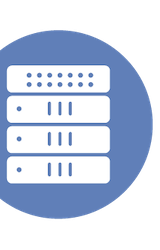Although AI is certain to transform society, not to mention computing, what we know if it is unlikely to last much longer. This episode of the Tech Field Day podcast brings together Glenn Dekhayser, Alastair Cooke, Allyson Klein, and Stephen Foskett to discuss the real and changing world of AI. Looking at AI infrastructure today, we see massive clusters of GPUs being deployed in the cloud and on-premises to train ever-larger language models, but how much business value do these clusters have long-term? It seems that the true transformation promised by LLM and GenAI will be realized once models are applied across industries with RAG or tuning rather than developing new models. Ultimately AI is a feature of a larger business process or application rather than being a product in itself. We can certainly see that AI-based applications will be transformative, but the vast investment required to build out AI infrastructure to date might never be recouped. Ultimately there is a future for AI, but not the way we have been doing it to date.
Measuring the Current Day Blast Radius of Outages
Writing for Gestalt IT, Sulagna Saha discusses the most recent delegate roundtable discussion from Storage Field Day. Delegates, Enrico Signoretti, Frederic Van Haren, Glenn Dekhayser, Gina Rosenthal, Richard Kenyan, and moderator, Stephen Foskett, stood out in the discussion of Managing the Blast Radius as System Components get Bigger! Check out Sulagna’s thoughts on the dissection of this premise and the brainstorming that occurred on ways to limit the scope of impact.
Tech ONTAP Podcast: NetApp at Storage Field Day 15
On the most recent episode of NetApp’s Tech ONTAP Podcast, Tech Field Day founder Stephen Foskett and Storage Field Day delegate Glenn Dekhayser discuss what they saw from the company at their most recent Field Day presentation.
#SFD15: Datrium impresses
Glenn Dekhayser saw a lot of interesting technology at Storage Field Day, but Datrium stood out to him with their focus on end user experience and value extraction from technology. Using a looser definition of HCI with discretely scalable compute and storage nodes, Datrium’s solution offers all the table stakes features expected in an HCI system. What distinguishes it is a robust GUI with lots of telemetry and easy provisioning options, as well as tight cloud integration with AWS.
Commvault Go 2017 – In Search of the Perfect Data Management Machine
In this post, Glenn Dekhayser breaks down the major announcements coming out of Commvault GO. This includes a look at their new HyperScale platform, their GlusterFS-backed, scalable, and fault tolerant back-end storage system. This can run on Commvault’s own hardware and software combination, or on a number of third-party hardware platforms. Notably, Cisco offers ScaleProtect, which puts HyperScale on their UCS platform.
In Search of the Perfect Data Management Machine
Glenn Dekhayser has a write up from his first Storage Field Day event. He got to hear from Intel, specifically about their Storage Performance Development Kit. Intel developed this to give hyperscale deployments more consistent performance for storage latency, which in SSDs often experiences frustrating tail latency. SPDK works by isolating an entire CPU core solely to storage IO. This allows for much lower latency, and gives you almost linear scalability with NVMe drives. Glenn is impressed with the impacts this could have at scale.
Glenn Dekhayser
Technologist with 30+ years working with Enterprise Storage and Data Management, more recently working with global organizations on AI Infrastructure as well. Author of the Authoritative Core architectural design pattern.








